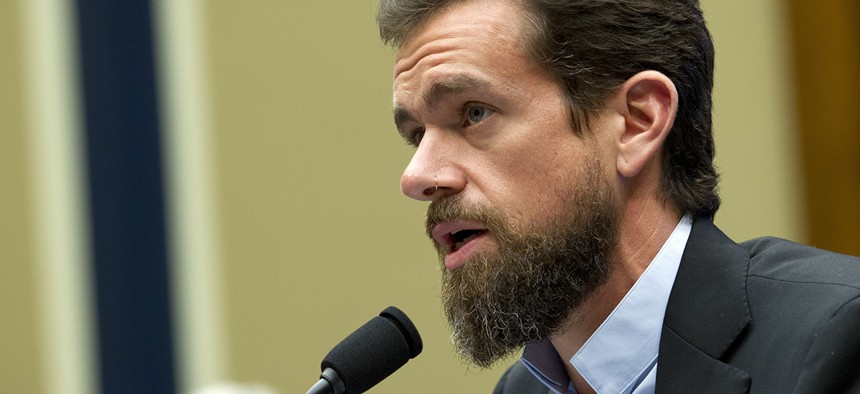Twitter’s Existential Crisis Has It Reconsidering The 'Like' Button

Twitter CEO Jack Dorsey testifies before the House Energy and Commerce Committee Wednesday, Sept. 5, 2018. Jose Luis Magana/AP
Recent reports have floated the idea that the platform will drastically change.
Twitter is in the middle of a shakeup that could fundamentally alter the way the platform functions, as the company grapples with torrents of bots and trolls that cascade from politically-charged posts.
Multiple recent reports have floated the idea that Twitter will drastically change. It recently showed reporters that it had been testing out adding status indicators like AOL Instant Messenger, and building question-and-answer forms into profile pages. But at a meet-up with Twitter users in San Francisco last week, CEO Jack Dorsey said that he didn’t like the heart-shaped like button, and the platform would be nixing the feature, The Telegraph reported Oct. 29.
An earlier report from the Washington Post suggested that Twitter had been thinking about ways to redesign the like button, although not getting rid of it entirely.
Twitter wasn’t immediately available to comment on The Telegraph’s report, but it did tweet:
As we've been saying for a while, we are rethinking everything about the service to ensure we are incentivizing healthy conversation, that includes the like button. We are in the early stages of the work and have no plans to share right now. https://t.co/k5uPe5j4CW
— Twitter Comms (@TwitterComms) October 29, 2018
The talk of these changes comes at a time where Twitter is rethinking how its platform lends credibility and influence to different people online. It recently removed the number of retweets a tweet gets when they’re posted outside of the platform, such as in a news story, replacing it with the number of “people are talking about this.” Dorsey has spoken often about how echo chambers form on his platform, insulating users from realistic depictions of political opponents while reinforcing their own beliefs.
“The most important thing that we can do is we look at the incentives that we’re building into our product,” Dorsey recently told the Washington Post. “Because they do express a point of view of what we want people to do—and I don’t think they are correct anymore.”
NEXT STORY: The Amazon Selling Machine





